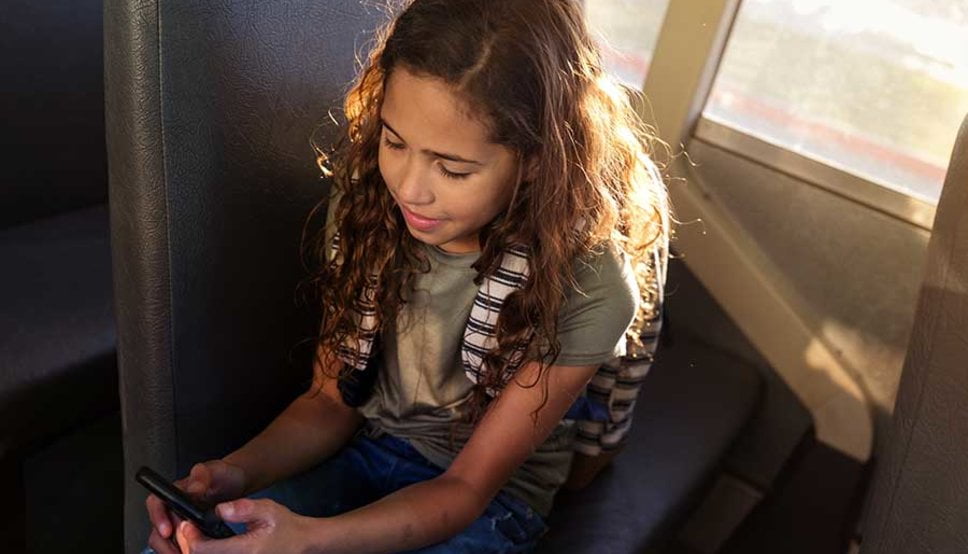
Multitasking has become a common theme in our lives. It’s a wonder how we manage it all.
We depend on our smartphones for work, school, our personal and social lives. When was the last time you left home without your phone and kept on going? The internet has become a significant part of our daily lives. So too has social media. And it is having an impact on today’s teens.
Contents
Social media usage
Back in 2005, when social media was still in its infancy, only about 5 percent of users in the United States were involved in social media. In 2019, that number grew to about 70 percent.
- Pew Research Center surveyed social media usage and popularity among US adults early in 2019. The survey found that while the most-used social platforms for adults are YouTube and Facebook; teens prefer SnapChat and Instagram, while TikTok is reportedly the fastest growing social network among younger users.
- Social media use is nearly universal among today’s teens. Pew Research Center reports 97 percent of 13- to 17-year-olds use at least one of seven major online platforms.
- The amount of time spent on social sites is astounding. One report indicates the average teen ages 13 to 18 spends about nine hours on social media each day; tweens ages 8 to 12 are on for about six hours a day.
Like most things, using social media has its positives (the good), its cautionary tales (the bad), and dangers (the ugly) that lurk and impact the lives of many, but especially teens.
Social media and technology offer us greater convenience and connectivity:
- staying connected with family and friends worldwide via email, text, FaceTime, etc.
- quick access to information and research
- banking and bill pay at our fingertips
- online learning, job skills, content discovery (YouTube)
- involvement in civic engagement (fundraising, social awareness, provides a voice)
- great marketing tools
- opportunities for remote employment
Social media can be a good thing, but if teens ever feel uncomfortable about something they see or read on social, they should trust their own feelings and talk to someone – a parent, a teacher, or another trusted adult. Bullying, threats and cruelty on social media are all signs that the person doing those things needs help.
Along with the good comes the bad. With all of its benefits, the nature of social media presents a range of potential issues.
- Online vs Reality. Social media itself is not the problem. It is the way people use it in place of actual communication and in-person socializing. “Friends” on social media may not actually be friends, and may even be strangers.
- Increased usage. The more time spent on social media can lead to cyberbullying, social anxiety, depression, and exposure to content that is not age appropriate.
- Social Media is addicting. When you’re playing a game or accomplishing a task, you seek to do it as well as you can. Once you succeed, your brain will give you a dose of dopamine and other happiness hormones, making you happy. The same mechanism functions when you post a picture to Instagram or Facebook. Once you see all the notifications for likes and positive comments popping up on your screen, you’ll subconsciously register it as a reward. But that’s not all, social media is full of mood-modifying experiences.
- Fear of Missing Out. FOMO has become a common theme, and often leads to continual checking of social media sites. The idea that you might miss out on something if you’re not online can affect your mental health.
- Self-image issues. Social media sites provide tools that allow people to earn others’ approval for their appearance and the possibility to compare themselves to others. It can be associated with body image concerns. The “selfieholics” and people who spend most of their time posting and scrolling are the ones most vulnerable to this. In fact, most college girls who use Facebook at least five times a day are likely to link their self-worth to their looks. That doesn’t mean that the main problem is social media; it only provides a medium for it, which further elevates the problem. It also promotes the same sort of behavior to others.
Social media and bullying
Sadly, there is an ugly side to all that technology offers. While bullying is not a new concept, social media and technology have brought bullying to a new level. It becomes a more constant, ever-present threat — cyberbullying. The State of Rhode Island anti-bullying laws & regulations define bullying and cyberbullying as follows:
“Bullying” means the use by one or more students of a written, verbal or electronic expression or a physical act or gesture or any combination thereof directed at a student that:
- causes physical or emotional harm to the student or damage to the student’s property
- places the student in reasonable fear of harm to himself/herself or of damage to his/her property
- creates an intimidating, threatening, hostile, or abusive educational environment for the student
- infringes on the rights of the student to participate in school activities
- materially and substantially disrupts the education process or the orderly operation of a school
“Cyberbullying” means bullying through the use of technology or any electronic communication, which shall include, but not be limited to, any transfer of signs, signals, writing, images, sounds, data, texting or intelligence of any nature transmitted in whole or in part by a wire, radio, electromagnetic, photo electronic or photo optical system, including, but not limited to, electronic mail, Internet communications, instant messages or facsimile communications.
Bullying statistics
Every 7 minutes a child is bullied. Unfortunately, intervention is rare, with an adult intervening in only four percent of cases, and a peer in 11 percent. An astonishing 85 percent of all cases of bullying are not addressed.
The following are just some statistics on how common bullying and cyberbullying have become: According to StopBullying.org:
- One out of four (25 percent) teens are bullied, while up to 43 percent have been bullied while online.
- Nine out of ten LGBTQ students experienced harassment at school and online. Biracial and multiracial youth are more likely to be victimized than youth who identify with a single race. Kids who are obese, gay, or have disabilities are more likely to be bullied than other children.
- 58 percent have not told their parents or an adult about something mean or hurtful that happened to them online.
- 5.4 million children stay home on any given day because they fear being bullied.
Social media and suicide
Sadly, the cons of social media can take a toll on young minds. Suicide remains among the leading causes of death of children under age 14. In most cases, young people die from hanging.
- Suicide rates among 10- to 14-year-olds have grown more than 50 percent over the last three decades, according to the American Association of Suicidology.
- Suicide rates among children between the ages of 10 and 14 are very low, but are creeping up, according to the American Foundation for Suicide Prevention.
What can parents do?
As parents, there are things we can do to improve our children’s lives online and in real life.
- Attempt to model the behavior we want to see.
- Set boundaries right way when you give your child their first phone. Set parental controls on his or her phone, with access to their passwords. Phones should be charged somewhere other than their room at night, and should be shut off an hour or two before bed.
- Have conversations with your children on why some things should be kept private.
- Take time to actively engage with your kids face-to-face. This interaction teaches them how to follow social cues, verbal and non-verbal.
- Talk to your kids without glancing at your phone.
- Find opportunities to have genuine conversations that are not lectures.
- Be aware of privacy concerns and cybersecurity issues.
Technology has changed the way we live, work, and socialize. But it can’t replace parenting.
For more tips on parenting, visit the Growing section of our Lifespan Living health and wellness blog.
[“source=lifespan”]




